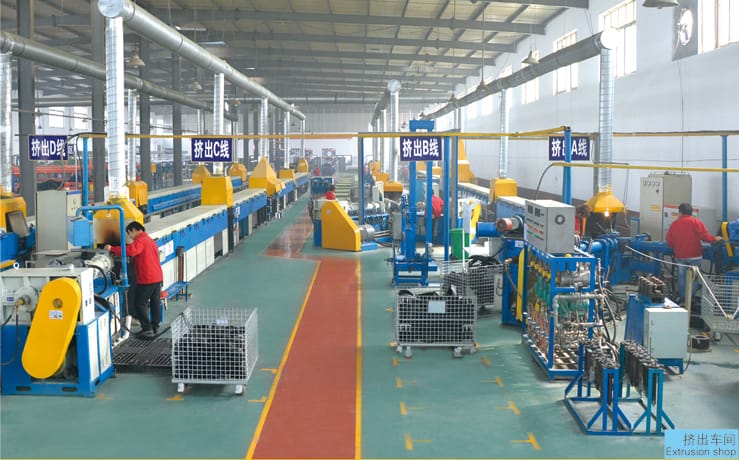Hebei Shida Seal Group is equipped with state-of-the-art rubber extrusion lines. Extruding rubber is our key strength. Standard or custom closed-cell sponge & solid rubber extrusions of high-quality are available in continuous lengths, intricate profile shapes & different colors at any time. We have established ourselves in automotive industry and became a preferred supplier in the field of extruded rubber products technology. We manufacture automotive body sealing products, seals & weatherstrips from EPDM (ethylene propylene diene monomer) and PVC (polyvinyl chloride) that can be reinforced with flexible segmented steel carrier / flexible steel wire carrier. We have 4 extrusion lines (Microwave Curing/Vulcanization + Hot Air Curing/Vulcanization) and 1 Thermoplastic Vulcanizate (TPV) extrusion line (Co-extruded on Slip-coating, Splicing, Corner Molding).

Extruded Rubber Products, Rubber Extrusions & Profiles:
|
|
|
Rubber Extrusion Lines:

Rubber Extrusions Process:
The process of polymer extrusion involves taking raw materials and creating a product that can be formed into a unique profile of a variety of lengths, shapes and colors. The profiles are highly customizable and can be made from almost any type of rubber. There are two processes for rubber extrusion; continuous in-line cure and off-line cure.
Continuous in-line cure extrusion:
In this process the heated rubber is driven through a die in a uniform stream and travels through a ‘curing tunnel’ that raises the product to the appropriate vulcanizing temperature and maintains that temperature until the curing process is complete. There are multiple methods that can be used to form the ‘curing tunnel’ including; high velocity hot air, microwave ovens, hot liquid curing medium (LCM) or a fluidized bed of glass Ballotini beads. The length of the tunnel is taken into consideration along with the speed to calculate the temperature throughout the vulcanizing process. As the cured rubber exits the tunnel it is moved into a cooling channel where the rubber is cooled and residue is removed. The speed at which the product travels through the cooling channel is facilitated by a puller at the end of the line to maintain overall stability.
Some of the advantages of continuous curing are; the ability to produce unbroken lengths, increased manufacturing speed, minimal labor, and efficient uses of energy and space. This process also allows for the combination of multiple materials.
This process does have some limitations. Typically the cost of raw materials is higher, and there can be size and shape limitations.
Off-line cure extrusion:
In this method the curing process is aided by autoclaves. The warm rubber is driven through the die and then exposed to high-pressure steam in order to achieve the appropriate vulcanizing temperature. The temperature is maintained until the chemical reaction is complete. Before the curing process begins the uncured, tube-shaped, product is secured over a mandrel to force the rubber to maintain a distinct shape during the curing process.
